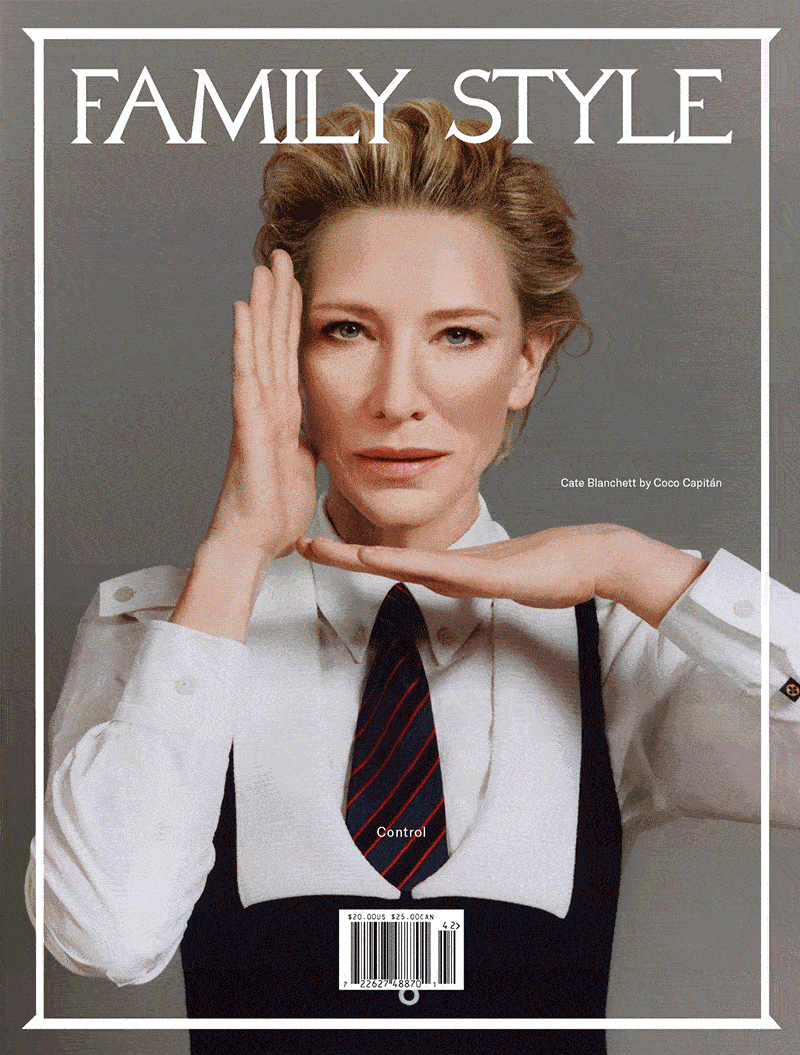.avif)
Lorna Simpson, Collide, 2019. Image courtesy of the artist and Hauser & Wirth.
Blue goes with everything. It pairs well with jeans, with prints, with solids. Navy, in particular, is said to look best with other, brighter colors than black. Regardless of its shade or possibility, though, the color is sacred for Black folk, and in her new book, Black in Blues: How a Color Tells the Story of My People, Imani Perry explains why.
The sound of the blues music is central to the color’s aesthetic adoption, the interdisciplinary scholar and Harvard professor explains—it is inseparable from Black plight and pleasure, and you can see it throughout history. Now memorialized in the Smithsonian’s permanent collection, Rosa Parks’ home-sewn blue dress was a social power move for a Black woman activist in the South, both elegant and out of necessity. Before that, enslaved Africans in South Carolina painted their interiors blue with indigo as a means of spiritual protection, and after, Miles Davis, perhaps symbolically, wore a blue suit for his 1959 Kind of Blue album cover image.

Alexandra Yingst, Children Now Play in the Serf. Image courtesy of Discover by Silversea.
“I want readers to feel how vast and extraordinary Black life has been and can be,” says Perry, who won the National Book Award in 2022. “We’ve had this whole season of telling stories about how pernicious and pervasive racism and discrimination are, and appropriately so. But I'm interested in turning the gaze toward what it means to live a Black life that is not reducible to that.”
Early on in the book, Perry presents a detailed reflection on textiles, explaining how African slaves were crucial to indigo cultivation in the States in the 18th century. The function of that labor, however, wasn’t merely industrial, it allowed them to satisfy their sartorial desires. In one striking story, she writes about Isaac Howard, the English textile trader taken aback by planters who deferred to the tastes of enslaved people, often preferring blue clothing. While this is not the most familiar narrative of Black life back then, it happened. We resisted, and we insisted.

Dawna Moore, Haint Blue Door, 2020. Image courtesy of Fine Art America.
Much of the color’s meaning to Black folk is mysterious or alchemistic. “In terms of adorning the body, it's luxurious. It has this sense of play and delight. And for people who have to toe that line, it allows you to experience that delight while having a bit of your guard up,” Perry says, referring to Black Americans fighting for their civil rights. “Something about the alchemy of that color on the body is resilient.” And blue’s significance is not just in what we wear. The author points to the blue-toned artifact-packed homes of artist Joe Minter in Alabama and actress Annie Abrams in Arkansas as further examples of the color’s symbolism—time and again it has reflected the concurrent feelings of safety and anguish we experience in our homes. Perry chalks this up to the blues of Black life: “Sometimes you gotta run away from home, and sometimes home is a refuge.”
This juxtaposition occurs through Black music, too. In his 1969 song “Afro Blue,” conga musician Mongo Santamaría lumps the rich variety of the color with lyrics like “elegant boy” and “beautiful girl.” Perry observes that on many levels, the song is culturally affirming, an “undeniable call to celebrate Blackness.” Decades later, when Alicia Keys crushes on a guy at the coffee shop she works at in the 2003 music video for “You Don’t Know My Name,” he’s wearing a “fly blue suit.” Blue, then, is debonair; it has charisma. What these songs convey about the color are its imaginative visual allure and potent social meanings.
Blue is in our music, on our clothing, on our walls—and the space that exists around it. All that space. And Perry isn’t rushing to fill it. Because, as her book reveals, it’s blue’s vastness and how it manifests in each person’s self-expression that speaks to our culture: that individuality shapes it. That there are limitless distinct ways to be Black in blues.






.avif)





.avif)

